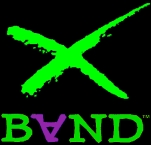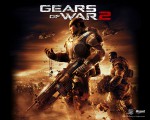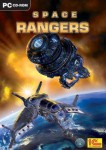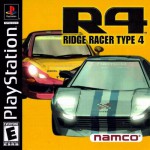$20 GOTW/Lost Classics 4-Part Special
by William Talley, filed in $20 Game Of The Week, Games, Lost Classics on Feb.26, 2011




Well, once again, today is my birthday. Although I’m the one hitting the big 3 to tha 0, you’re the one getting the present, just like we do every year. So click below, and get a quadruple dose of $20 GOTW/Lost Classics goodness.
$20 Game of the week: Space Rangers (PC)
Remember that game Space Trader? Of course you do, I mercilessly ripped it apart over half a year ago. If you were intrigued by its premise of making trades, then this is the game you should be playing. Space Rangers, made by Russian company Elemental Games, is an open-ended space combat/economic trading sim which allows players to approach it any way they wish. After selecting your character’s race and profession, you go through a brief training course which teaches you the basic ins and outs of the game. After that you’re on your own. Your goal is to stop a sinister alien fleet known as the Klissans from destroying the galaxy, although how you accomplish this goal is up to you. Do you work the economy and live off supply and demand? Do you perform work for the government? You can even be a pirate and jack passerby for their loot. The conflicts that go on around you are not scripted, and the other ships you see traveling have their own goals and wishes. The galaxy is lifelike, and there is plenty to do in the universe. Although this game didn’t generate much noise in North America and other places, it was hugely popular in Russia and parts of Eastern Europe. Thankfully it has recently been released on various distribution networks such as GOG.com and steam, and there is a sequel available as well.
$20 Game of the Week: Gears of War 2 (Xbox 360)
If it ain’t broke, don’t fix it. That’s the motto that Epic went by when crafting the sequel to it’s 2006 hit shooter that raised the bar on graphics and redefined cover and aiming. Picking up right where the original GOW left off, the Coalition of Ordered Governments is waging its war against the hideous locusts. This time the horde is utilizing a devastating new tactic: sinking entire cities and abducting their population. Once again, you step into the shoes of Marcus Fenix (and Dominique Santiago if playing in co-op) as he attempts to gain ground against the creatures. However, a new kind of enemy rears its ugly head, and things get more hectic than ever.
Marcus and Dom learned a few new tricks since their last outing. They can pick up enemies and use them as shields, and perform devastating melee attacks. Just like in the last game, utilizing cover is of the utmost importance, ad simple running and gunning will get you killed quickly. The Unreal Engine 3-powered graphics are a site to behold, and the levels are all unique and have great variety. Remember how disappointed Xbox 360 players were when they found out that they weren’t getting the PC-exclusive “Brummak” level? Well, prepare to get up close and personal with them, along with several other creatures that are even BIGGER. The story tries to get a bit more deeper with Dom’s search for his wife, but otherwise, the story is window dressing for the locust-shooting action. Multiplayer is back and is fun as it was the last time around. There is even a new horde mode, in which players survive against endless waves of locusts. New maps are available on the Xbox Live marketplace.
With Gears of War 3 hitting this fall, now is a good time to get your practice at locust busting. It may be more of the same, but as good as the original was, that’s not a bad thing.
Lost Classics: R4 (Playstation 1)
I like to play a good racing game once in a while, but I have to be in the mood for it. Back in the days, hardcore racing sims such as Gran Turismo scared me off (at least until I had a roommate who has good at it), but I couldn’t stand Mario Kart-esque cart racers. Namco’s Ridge Racer stood in between casual and sim. It was easy enough to pick up and play, yet serious enough to look professional. Ridge Racer’s engine was built upon hardware that was easily duplicated on PS1, and like Tekken, Namco had no problems bringing it home. R4 was the fourth entry in the series, and unlike it’s predecessors, was a console exclusive. Thus, Namco added more into the game while still keeping the arcade style intact. It made use of Gouraud shading, giving the game a better look than its predecessors. It also contained 2-player split screen, a first for the series. Its single player mode had 4 separate storylines based on which racing team you chose. Although the game contained only 8 tracks, you can unlock up to 321 cars. The soundtrack is awesome, as teh jazz and trip-hop tunes go great with ther driving. As an added bonus, the game contained an enhanced version of Ridge Racer, which ran at 60 frames per second and contained Gouraud shading, similar to R4. This would be the last PS1 Ridge Racer game before RR5 hit the Playstation 2. Although it couldn’t hold a candle to Gran Turismo in terms of content, it did a great job of keeping casual fans entertained.
Lost Classics: XBAND (Super Nintendo, Sega Genesis)
Before Xbox Live, Playstation Network, or 16-digit friend codes, there was the Xband. The Xband bought online gaming to sixteen bit gaming systems, and for a time, changed how we played video games. Developed by Catapult Entertainment, the Xband allowed players to connect online and play against each other for a small fee. Players could even create friend lists and send messages. Only a small amount of games could be played on the service, and more were supported on the basis of popularity. However, among them were games such as Super Street Fighter, Madden 95, Mario Kart, and even the SNES version of Doom. However, as online gaming was new at the time, there were a number of issues that led to the Xband’s early demise. For instance, there was on way to restricting vulgar or offensive content, no way to report abusive players, and there ware latency issues in some of the newer games. Catapult attempted to continue the service with the Sega Saturn, but they ran into competition with Sega’s own Sega net, which ironically, used Xband technology. Attempts on PC were a no-go as well, as companies chose to make use of their own TCP/ICP management to conduct online gaming. The Xband would die out by 1997, and it wouldn’t be for several years until companies finally got online gaming right. However, the Xband remains an interesting footnote in gaming. At its peak, the service had over 7,000 users, and it had many of the features that are made famous by today’s online gaming services.


 PS3
PS3
 Famicom Dojo
Famicom Dojo KEEP PLAYING
KEEP PLAYING KEEP PLAYING: Rewind
KEEP PLAYING: Rewind Powet Toys
Powet Toys Powetcast
Powetcast Hitchhiker's Guide POWETcast
Hitchhiker's Guide POWETcast














